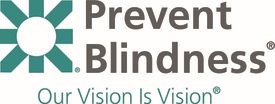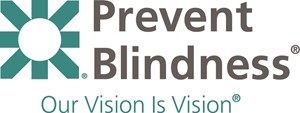
Source: Prevent Blindness America
Direct Costs Related to Glaucoma Reach $5.8 Billion Annually In the United States
Prevent Blindness Supports National Glaucoma Awareness Month in January to Educate Public on Major Eye Disease
CHICAGO, Dec. 16, 2013 (GLOBE NEWSWIRE) -- According to the 2013 "Cost of Vision Problems: The Economic Burden of Vision Loss and Eye Disorders in the United States," report, glaucoma and disorders of the optic nerve annually cost $5.8 billion, with an annual per-person treatment cost of $2,170. Today, more than 2.7 million Americans ages 40 and older have open-angle glaucoma. With the population of older Americans continuing to increase, these numbers will only grow.
January has been declared as National Glaucoma Awareness Month by Prevent Blindness and other leading eye health organizations. Prevent Blindness seeks to educate the public on the second leading cause of blindness (behind cataracts) by providing free resources via online or by mail through its "Glaucoma Learning Center." Visit www.preventblindness.org/glaucoma-learning-center, or call (800) 331-2020, for free information on risk factors, symptoms and treatment options.
For example, glaucoma risk factors include:
*Age: Those that are 40 and older are more likely to develop glaucoma. The older you are, the greater your risk.
*Race: People of African or Afro-Caribbean heritage are more likely to get glaucoma than the rest of the population. They are also more likely to develop glaucoma at a younger age.
*Family History: If you have a parent or sibling who has glaucoma, you are more likely to develop the disease.
*Diabetes: People with diabetes have a higher risk (40 percent) of developing glaucoma.
*Nearsightedness: People who are very nearsighted are at greater risk.
*Eye Injury or Surgery: Those who have had eye surgery or eye injuries may develop secondary glaucoma.
*Steroid Medication: Steroids may increase the risk of glaucoma when used for extended periods of time.
Prevent Blindness has recently put together free fact sheets to help answer common questions about health insurance, Medicare coverage for glaucoma, the Affordable Care Act and eye care. These may be found at www.preventblindness.org/health-insurance-and-your-eyes.
"Although there is currently no cure for glaucoma, the damaging effects can be reduced if diagnosed and treated early," said Hugh R. Parry, president and CEO of Prevent Blindness. "Our vision should always be a top priority, and the New Year is a great time for a resolution to make sure our eyes are healthy with a dilated eye exam!"
For more information on glaucoma or Medicare benefits for glaucoma services, please call Prevent Blindness at (800) 331-2020 or visit www.preventblindness.org/glaucoma-learning-center.
About Prevent Blindness
Founded in 1908, Prevent Blindness is the nation's leading volunteer eye health and safety organization dedicated to fighting blindness and saving sight. Focused on promoting a continuum of vision care, Prevent Blindness touches the lives of millions of people each year through public and professional education, advocacy, certified vision screening and training, community and patient service programs and research. These services are made possible through the generous support of the American public. Together with a network of affiliates and regional offices, Prevent Blindness is committed to eliminating preventable blindness in America. For more information, or to make a contribution to the sight-saving fund, call 1-800-331-2020. Or, visit us on the Web at preventblindness.org or facebook.com/preventblindness.
